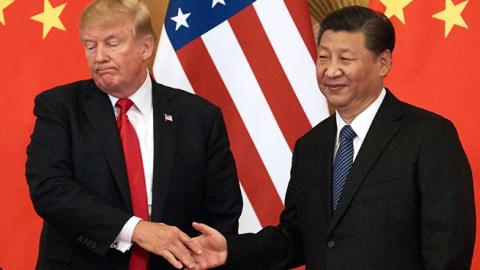Americans now know they can’t rely on China or even our allies to produce the goods we need during a pandemic. That’s why it’s time for the United States government to do what it did during the Cold War — pioneer a new approach to manufacturing. One of the most frightening aspects of the coronavirus pandemic is the realization that the U.S. is no longer self-sufficient and cannot produce enough of the most basic items needed to protect against and fight the virus. From N95 face masks to ventilators to essential pharmaceuticals, America is dependent on China. Now we watch as China threatens U.S. shortages and uses such trade for geopolitical gain in Italy and elsewhere.
This reliance on China has been a growing concern of the national security community for years, as it watched U.S. dependence on China grow in a range of areas, from military equipment components to rare earth minerals. While we could afford to ignore that uncomfortable recognition for a while, today our short-term critical needs make that impossible.
The problem with dealing with our dependence on Chinese manufacturing is that we are stuck in a deadlock. Some political leaders have called for a gradual economic decoupling to mitigate the risk. Others argue that decoupling would impose too many costs on consumers and businesses.
In the meantime, no matter how this debate plays out, there is a meaningful change that America can begin to implement now, that will not only cushion us against key dependencies, but also provide a road map for reducing the most serious ones, for good. This is for America to lead in agile manufacturing.
Agile manufacturing, sometimes called manufacturing 4.0 or digital manufacturing, involves implementing technology, such as robots, and more flexible processes that make it easier to quickly change factories from producing one good to another. This allows the manufacturer to respond to demand quickly. Think of how Ford Motor Company and Tesla are now producing masks and ventilators, except being able to do this easily and efficiently whenever there was a shortage of goods or other change in supply or demand.
Investing in agile manufacturing would pay significant strategic and economic benefits for the U.S. Investments could be used immediately to support the shift of some manufacturing to a COVID-19 response. It would enable a backup plan for any weaponized manufacturing power plays by China. Agile manufacturing would also help the U.S. manufacturing sector by making jobs much more resilient. Instead of a town being dependent on one product or company, if that product is no longer needed or that company goes bankrupt, the factory could quickly be retooled to manufacture other goods. There would also be consumer benefits, since new goods could be produced as consumer tastes or technologies change. Finally, there would be significant benefits for the technology, aerospace, and defense sectors, since they require much faster updates for strategic reasons.
Government agencies have individually called for more agile approaches. Last fall, before the crisis broke, senior FDA official Janet Woodcock urged a shift to advanced manufacturing technologies to improve drug quality, address shortages of medicines, and accelerate time-to-market. Last week, the Air Force acquisition chief, Will Roper, called for “digitized engineering” and highlighted an example from the 1950s when the Century Series of fighter planes produced six different jets in five years (compared with the decades it took to produce the current F-22 and F-35).
China is already strategically implementing agile manufacturing. Its “Made in China 2025” plan identified “numerical control tools and robots” as a key investment domain. Even more worryingly, China realized that Germany is the leader in agile manufacturing and has acquired German companies such as Kuka, one of the most important German flexible manufacturing companies.
Flexible manufacturing is not just a business school case of achieving efficiencies. It is a strategic tool that offers a concrete way to set ourselves up better for national security in the future. Three specific measures could be a start.
First, we need a strategic approach in which the U.S. government maps strategic industries so that they could produce related components if needed. A tiered system of categorization could identify plants that could be grouped by the speed at which they can change manufactured goods. While legislation such as CIFIUS effectively provides a “defensive mapping” of what we need to protect, a proactive strategic mapping approach takes the offense and begins the process of shifting the U.S. manufacturing industry.
Second, federal, state, and local governments must incentivize agile manufacturing through tax incentives and loan guarantees. The government must remove disincentives, such as contract requirements by the Department of Defense for dedicated tooling. Going further, agencies should require that manufacturers have an ability to retool quickly to continue production if geopolitical actors threaten supply chains of strategic industries. At the local level, factory towns should not be subject to the fortunes of a single product. They need to be able to adapt to changes in market supply and demand, which is good for both the nation and local communities.
Finally, the private sector has a role too. It should factor in flexible manufacturing as part of its initial investment assessments. This makes sense from a competitive standpoint, as it helps companies adapt to changing conditions. The government, as needed, could provide relevant industries with threat assessments, while organizations that cater to C-suite executives could evaluate the costs and benefits of moving in this direction.
Power and geostrategic influence depends as much on speed and agility as on any weapons system. COVID-19 has shown us and the world America’s manufacturing weakness. Agile manufacturing is one way to become stronger. In the long competition with China, it could mean the difference between winning and losing.
Read in the Washington Examiner

















